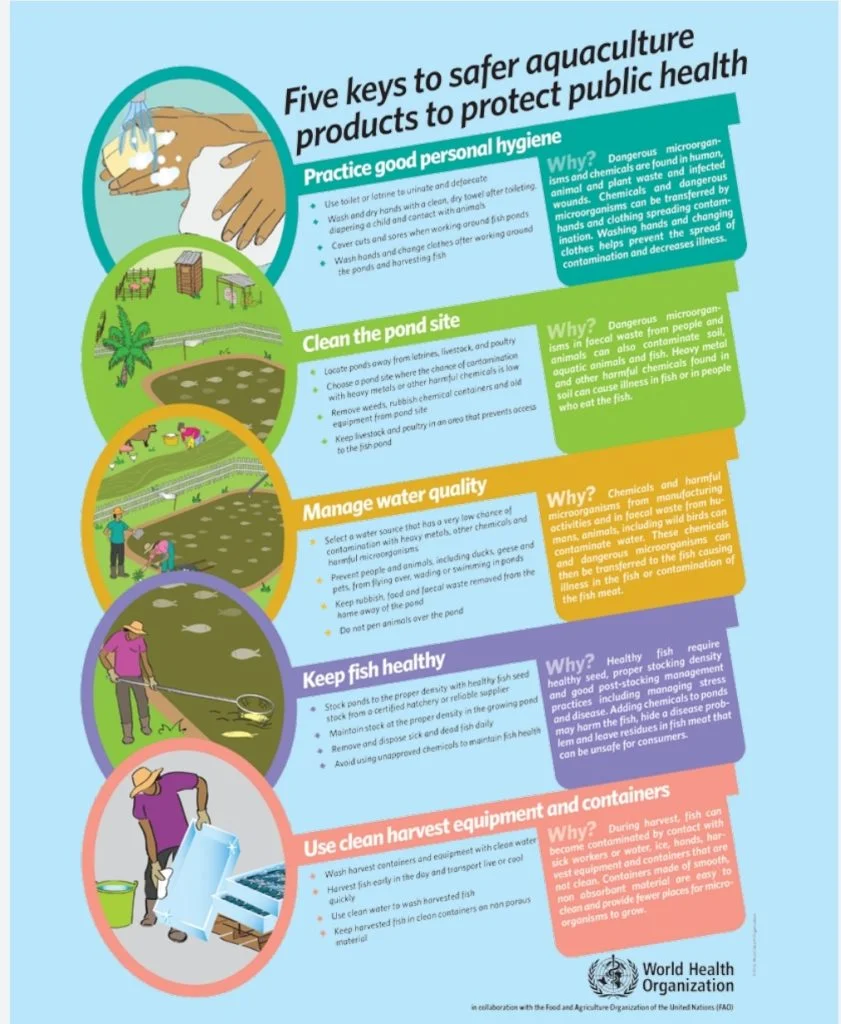The World Food Safety Day is organised on the 7th of June 2020 by the World Health Organisation and Food and Agricultural Organisation.Since fishes are important sources of proteins,steps are taken towards making aquaculture safe.
With the theme of Food Safety : Everyone’s Business, this event aims to make people aware of the hazards of contaminated food. Several creatives and manuals were released for this purpose. And this one is about the Five Keys to Safer Aquaculture Products to Protect Public Health.
Five Keys to Safer Aquaculture Products

- Practice Good Personal Hygiene : Microbes and chemicals can be easily transferred if proper Hygiene is not maintained.
- Urinate or defecate in toilets only.
- Clean and dry hands after touching animals.
- Cover any wound or sore while in water.
- Clean and sanitize both body and clothes after working.
- Clean the Pond Site : Microbes and chemicals can infect the fishes if proper steps are not taken.
- Create ponds away from latrines and animal pens.
- Ponds should also be away from garbage disposal sites.
- Remove any debris from the pond site.
- Livestock and poultry should not have access to pond.
- Manage Water Quality : Water quality is of upmost importance for healthy aquaculture.
- Water source should have low probability of contamination from any source.
- Prevent humans , animals or birds from entering pond.
- Waste disposal should be as far from the pond as possible.
- Do not put any animal pen above the pond.
- Keep Fish Healthy : Use scientific techniques and research to create and maintain the fishes.
- Seeds to be taken only from certified hatcheries and stock should be within limits.
- Maintain stock of density.
- Remove and properly dispose dead fish regularly.
- Do not use unapproved chemicals in the pond.
- Use Clean Harvest Equipment and Containers : Contamination can also happen while harvesting.
- Wash all equipment with clean water.
- Harvest early and make sure to transport or cool it as soon as possible.
- Wash harvested fish with clean water.
- Use clean containers on non porous surfaces should for storage.
These were the Five Keys to Safer Aquaculture Products to Protect Public Health as issued by the WHO. The complete manual is available for download here .
You can also read the Five Keys for Safer Food , Five Keys of Growing Safer Fruits and Vegetables and the Key Messages from WHO and FAO .
(Feature image source: sdsoyabean.org)

